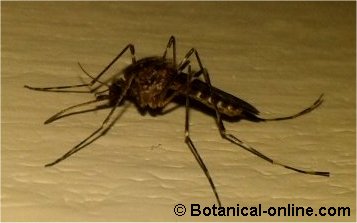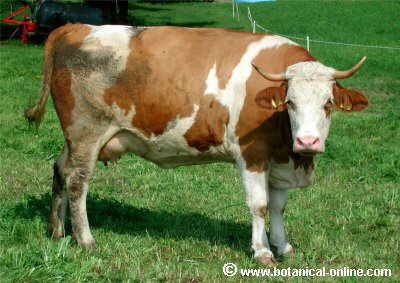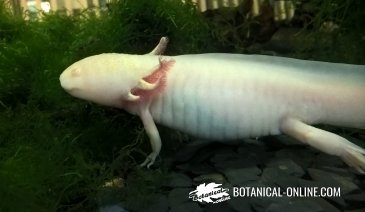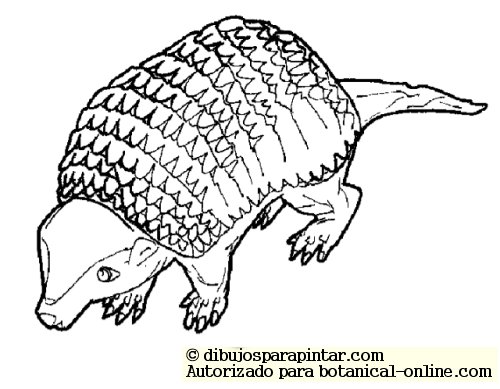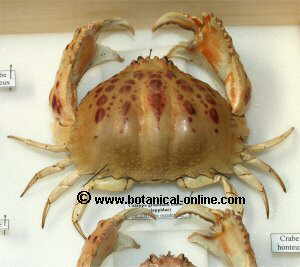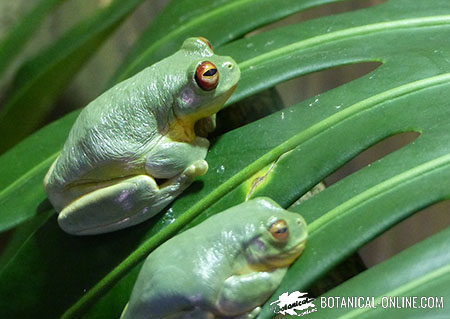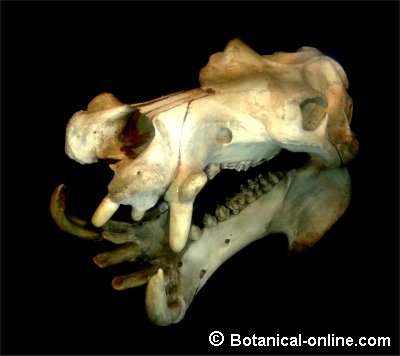Contents
Benefits of bee venom theraphy
Bee venom as anti-inflammatory
It has been proven that bee venom contains a principle called melittin. Although this principle is the maximum responsible for the itching and pain produced by bee stings, because it manages to release histamine, it contains other very interesting principles from a curative point of view.
Melittin is a potent anti-inflammatory, superior to certain steroid medicines, as it is able to encourage the natural production of cortisone.
What is the healing principle of bee venon?
The healing principle of bee venom, also called BVT (Bee venom theraphy), is also based on the ability of this venom to increase blood circulation.
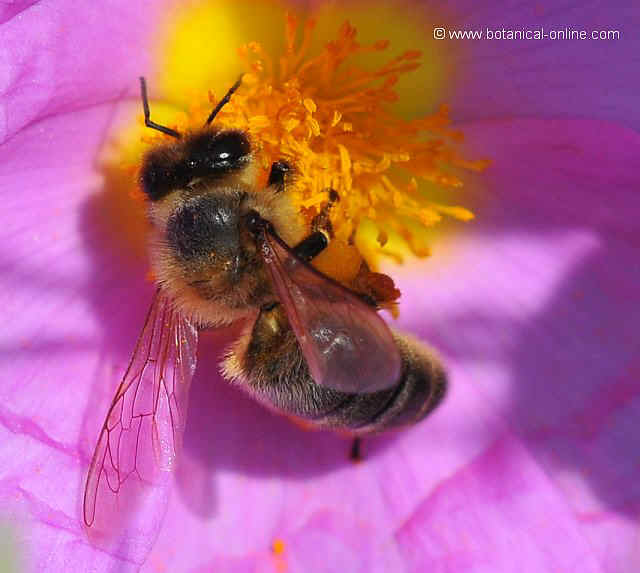
Bee on a flower
Why has bee venom curative properties?
This venom achieves this goal because it is able to fluidize the blood, dilate the arteries and capillaries and cleanse the blood vessels of possible impurities. Therefore, treatment with bee venom focuses on those diseases that occur or take advantage of the accumulation of toxins in the body. The main component responsible for this activity is hyaluronidase.
As the circulation increases, toxins are eliminated, which are mainly improved or cured by chronic diseases in which the body needs a general cleaning to be able to act on them, especially rheumatoid diseases. However, its use, according to most apiterapists, can be extended to other diseases or anomalies that improve with the use of this cleaning therapy: psoriasis, circulatory diseases (poor circulation, phlebitis, etc.), degenerative diseases (Alzheimer’s, Parkinson’s, Multiple sclerosis, etc.)
In addition, the application of this therapy provides vigor to the body and improves it, both physically and mentally.
How does it apply?
The principle through the cure of bee venom is applied by providing the patient with live bee stings (pickets) or by introducing the venom into the skin with injections.
If bees are used, each bee is removed from a jar by tweezers and placed on the point appropriate to the bite.
Once the picket has been produced, the stinger remains inside the skin for 10 or 15 minutes. Later it is extracted with the help of a pair of tweezers.
The number of pickets varies according to the problem to be treated and the nature of the patient to whom it is applied. Thus in problems of muscular pain an average of about 4 sessions with three or four pickets per session may be necessary, whereas in more serious problems like a multiple sclerosis can take several months with two or three sessions per week.
Currently, most specialists use bee venom injections instead of live bees in weekly double sessions in which 1 to 30 pickets are applied.
Usually they use ice before the picket to decrease the sensitivity of the area and after the picket to reduce pain and inflammation.
When and who applies the BVT?
Before applying the treatment, the doctor or specialist should evaluate the need to use this type of treatment and the physical and psychological conditions of the patient to be submitted. In general, it is recommended to use the BVT when other treatments have not had the expected result.
The application of bee venon theraphy requires a specific technique. Stings or injections should be given to certain parts of the body that are sensitive to touch (on the back next to the area adjacent to the spine, legs or shoulders, arms or fingers).
It is important that pickets never be done on areas that are dangerous (areas inflamed by previous or near genitalia, face, front of the neck and the inside of the joints)
Given the complexity of the entire process, both in its application and in the maintenance and manipulation of live bees, it is advisable to go to a apiterapist to perform this treatment. In any case, if the patient considers that a third person can do it, it is advisable that this one receives previous training by the specialist.
Prior to the application of venom, the apiterapist should perform a test picket to verify that the patient is not allergic to bee venom. When a family member or acquaintance applies the treatment, you must also undergo this prior test.
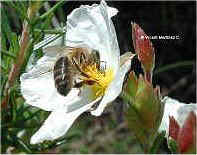
Bee on a flower
Main applications of bee venon theraphy
Among the main diseases or anomalies in which bee venom treatment can be used are the following:
- Rheumatoid arthritis: BVT can produce the cure of this disease in more than 50% of the cases. This requires a treatment of between one and a half years. In any case, even if there is no total cure, a reduction in the symptoms of arthritis is achieved with regard to inflammation, joint pain and other anomalies associated with it.
It has been proven that this treatment may also be useful in other types of arthritis, such as rheumatic polyarthritis, or ankylosing spondylitis. The treatment seems not to be as effective in the case of climacteric rheumatoid arthritis.
It is recommended to complete the treatment with supplements of vitamin C, supplements of magnesium and potassium daily, some natural remedy for arthritis, as well as a diet in which plant foods predominate (See more information on the diet for arthritis)
- Multiple sclerosis: For the treatment of this disease requires a period of application of about fifteen months, with intervals of rest. Its application manages to stop the disease in most cases, while the healing of the damage caused is estimated at ⅓.
It is recommended to complete the treatment with supplements of vitamin C, supplements of magnesium and potassium daily, some natural remedy for sclerosis, as well as a diet in which plant foods predominate (See more information on diet for sclerosis)
- Chronic fatigue syndrome: Approximate treatment is required for about three months. It is recommended to complete the treatment with supplements of vitamin C, some natural remedy for the syndrome of chronic fatigue, as well as a diet in which the predominant foods of vegetable origin
- Psoriasis: A treatment between 3 and 6 months can be quite effective for this disease. It is recommended to complete the treatment with supplements of vitamin C, supplements of magnesium and potassium daily, some natural remedy for psoriasis, as well as a diet suitable for psoriasis)
Other skin abnormalities can be improved with the use of BVT, such as reduction of scars, disappearance of warts, eczema or skin ulcers.
- Pain: Very useful in cases of muscle or joint pain or those pain caused by traumatic or metabolic causes such as bursitis, sprains, osteoarthritis, gout, neck pain. It is recommended to complete the treatment with supplements of vitamin C, some natural remedy for the pain, as well as a diet in which the predominant foods of vegetable origin.
- Poor circulation: The application of this treatment can be interesting in anomalies caused by poor circulation, such as varicose veins, phlebitis, hypertension, arrhythmias, thrombi, etc. It can also help in certain diseases accompanied by a poor blood supply, such as Alzheimer’s, Meniere’s disease, migraine.
- Herpes: You are working on the advantages of this treatment in herpes treatments, especially when it comes to shingles.
- Depression: Some specialists believe that its use could benefit the treatment of depression. However, others think that this type of treatment is not appropriate in case of mental illness, patients with stress or with physical or mental exhaustion.
Contraindications and side effects of treatment with bee venom
Bee venom theraphy (BVT) is NOT suitable for the following diseases: tuberculosis or diseases acute infections, diabetes, anemia, gonorrhea, syphilis, AIDS, heart failure, heart attack, angina pectoris, arteriosclerosis or other serious heart conditions, cancer, hepatitis, Nephritis, gastric ulcer, duodenal ulcer or other serious diseases of the liver and kidneys.
This treatment is NOT recommended in pregnant, nursing or recently menstruating women. It should only be applied in children if the specialist considers it appropriate.
It is counterproductive with the administration of drugs for diseases that affect immunity.
TVA can cause allergic reactions in certain people so it should not be given without the pre-allergy test to bee sting. If this is not present, allergic patients may even produce a severe anaphylactic reaction that can cause difficulty in breathing and even for heart and death.
The application of BVT always produces more or less itching, inflammation and pain, especially when the application of the venom takes place in areas that are close to the joints.
In addition, more than half of the patients suffer the so-called “relief crisis” produced between the second and sixth week of treatment, as a result of the organism stops reacting to the venom. It is characterized by the appearance of varied symptoms such as intense itching, pain, spots on the face, sneezing, muscle pain, etc. Once this period passes the negative symptoms decrease.
![]() More information on royal jelly, honey and other bee products.
More information on royal jelly, honey and other bee products.

